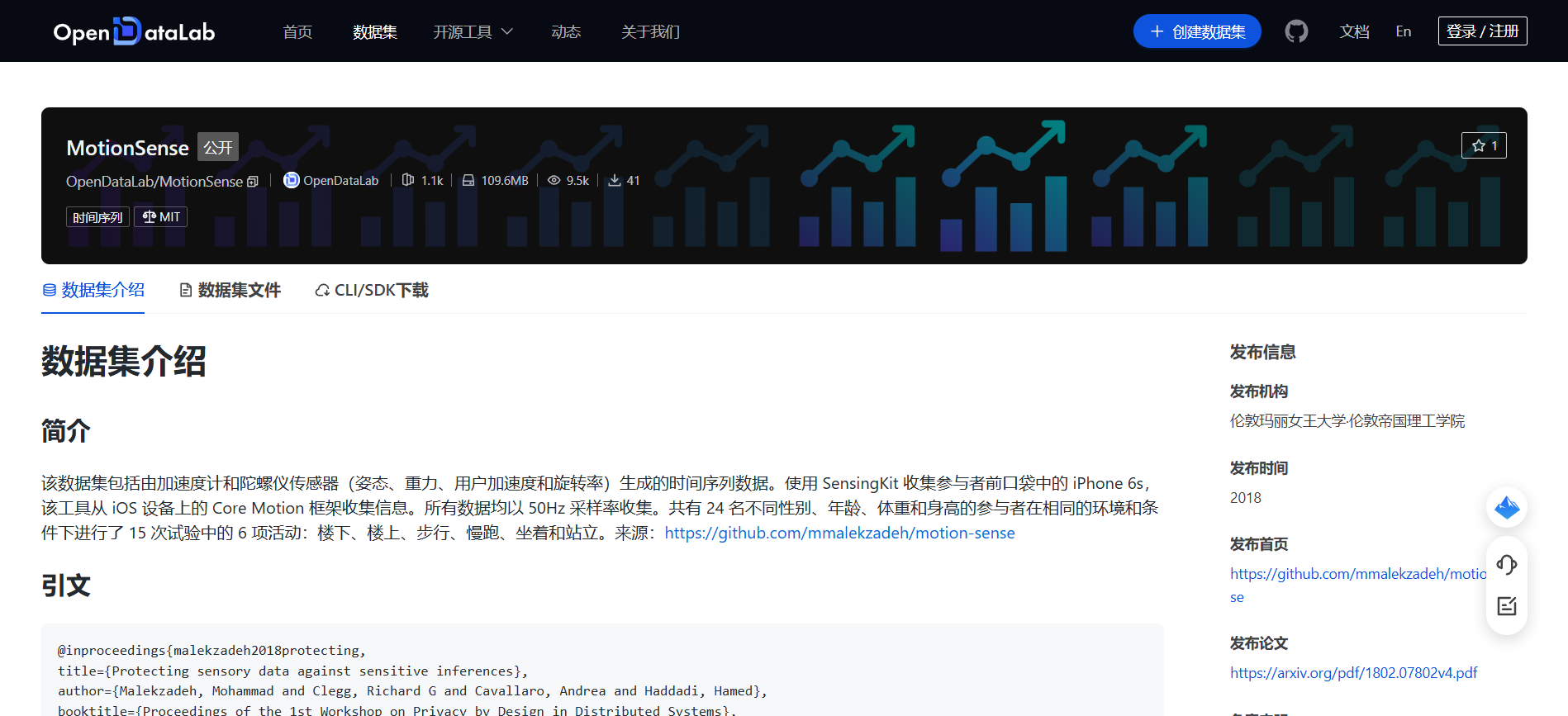MotionSense|移动健康数据集|人体活动分析数据集
收藏
- MotionSense数据集首次发表,由Alaa Al-Hamadi等人提出,旨在通过智能手机传感器数据进行用户活动识别。
- MotionSense数据集首次应用于活动识别和用户行为分析的研究中,展示了其在机器学习和数据挖掘领域的潜力。
- MotionSense数据集被广泛用于多模态数据融合和深度学习模型的训练,进一步提升了活动识别的准确性。
- MotionSense数据集在健康监测和个性化服务领域得到应用,推动了智能设备在医疗和日常生活中的应用研究。
- 1MotionSense Dataset: Towards Activity Recognition from Accelerometer DataUniversity of Waterloo · 2019年
- 2Human Activity Recognition Using Smartphones DatasetUniversity of California, Irvine · 2012年
- 3Deep Learning for Human Activity Recognition: A Resource Efficient Implementation on Low-Power DevicesUniversity of California, San Diego · 2016年
- 4A Survey on Human Activity Recognition Using Wearable SensorsUniversity of California, San Diego · 2018年
- 5DeepSense: A Unified Deep Learning Framework for Time-Series Mobile Sensor Data MiningUniversity of Waterloo · 2017年
Figshare
Figshare是一个在线数据共享平台,允许研究人员上传和共享各种类型的研究成果,包括数据集、论文、图像、视频等。它旨在促进科学研究的开放性和可重复性。
figshare.com 收录
SVAMP
在解决基础应用数学问题时,模型往往主要依赖于浅层启发式方法,而非进行深度推理。因此,一个更具挑战性且经过可靠评估的SVAMP数据集被引入。该数据集改编自现有的数据集,用于评估模型在数学问题解决和推理能力方面的敏感性,其难度保持在相当于小学四年级的水平。
github 收录
中国区域交通网络数据集
该数据集包含中国各区域的交通网络信息,包括道路、铁路、航空和水路等多种交通方式的网络结构和连接关系。数据集详细记录了各交通节点的位置、交通线路的类型、长度、容量以及相关的交通流量信息。
data.stats.gov.cn 收录
MeSH
MeSH(医学主题词表)是一个用于索引和检索生物医学文献的标准化词汇表。它包含了大量的医学术语和概念,用于描述医学文献中的主题和内容。MeSH数据集包括主题词、副主题词、树状结构、历史记录等信息,广泛应用于医学文献的分类和检索。
www.nlm.nih.gov 收录
UAVDT Dataset
The authors constructed a new UAVDT Dataset focused on complex scenarios with new level challenges. Selected from 10 hours raw videos, about 80, 000 representative frames are fully annotated with bounding boxes as well as up to 14 kinds of attributes (e.g., weather condition, flying altitude, camera view, vehicle category, and occlusion) for three fundamental computer vision tasks: object detection, single object tracking, and multiple object tracking.
datasetninja.com 收录
